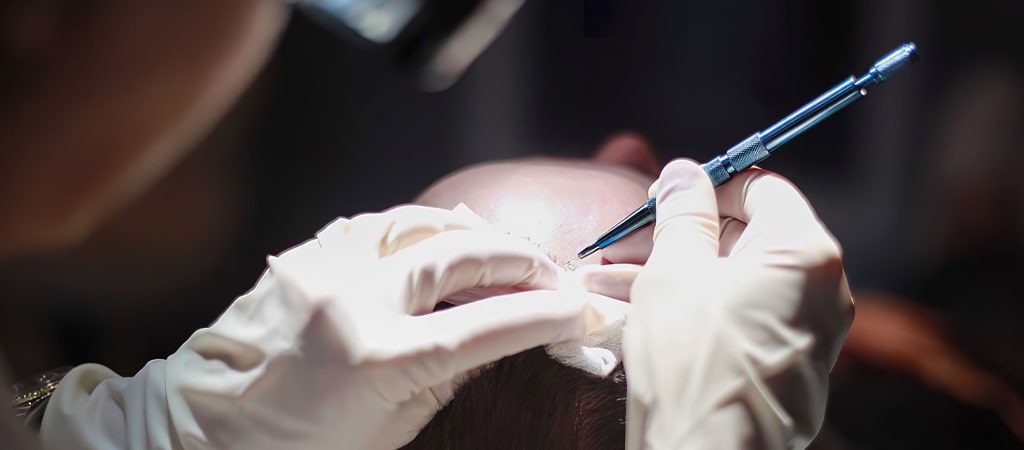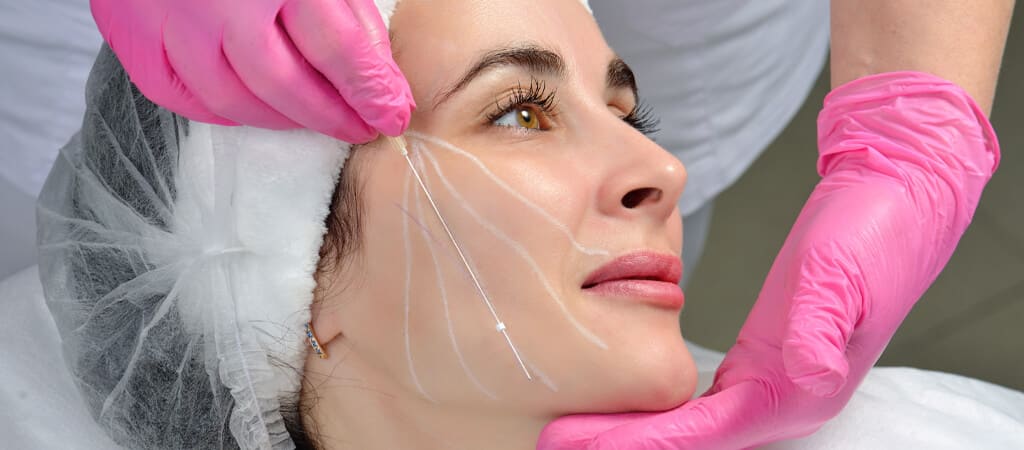What Is A Face Lift (Rhytidectomy)?

A face lift is a procedure to remove the visible signs of aging including wrinkles and sagging. Over time, the skin starts to show these effects. Forehead lines become prominent, skin loses vitality; lines, bags and dark circles start to appear under the eyes, sagging in the eyelids start to occur, loss of chin contours, deep lines start to form in the mouth and nose area and the cheeks start to sag, which are quite normal in the aging process.
A face lift procedure is performed to eliminate the appearance of these effects and to make the skin taut again via special hanging and stretching methods. This surgery is also known as rhytidectomy by the plastic and aesthetic surgery branch. The procedure involves the removal of sagging and irregularities and excess fat tissues in the neck and cheeks. If necessary, facial tissue can be added by the physician for a young and fresh appearance

Who Is A Face Lift Suitable For?
Although a face lift is a popular procedure preferred by women, there has been a growth in demand by male patients in recents years. Apart from aging, other external factors like sun rays, stress, alcohol, smoking and poor diet causes wrinkles and blemishes on the face. The procedure is mostly applied to patients over the age of 40, however where seen suitable by the physician, it can be applied to individuals between the ages of 30 and 85.
Patients whose skin has not yet completely lost all elasticity but still has sagging in the neck and/or face, and who does not have any chronic health problems are considered ideal for this procedure. Depending on the patient’s desires, extra treatments like an eyebrow lift, eyelid and nose aesthetics and forehead correction procedures can also be applied during the operation. Patients who smoke must quit 10 days before the operation
How Is Face Lift Surgery Performed?
A Face lift procedure is performed in an operating room under general or local anesthetic, depending on the physician’s decision. The duration of the procedures varies based on patients desires, condition, and the physician’s plan, however it can take between 3-10 hours. The duration increases as the number of extra procedures to be performed increases. The two commonly preferred types of facelift surgeries are listed below.
Classic Facelift
In a classic facelift, a small incision is made from the front of the ear towards the back. The tissue in the skin is then stretched. If the skin alone is stretched, the patient may experience problems during recovery. This method aims to stretch the tissues in the skin to obtain long-term results. This procedure is widely preferred for sagging skin issues that occur due to advancing age.
Endoscopic Facelift
An endoscopic facelift uses cameras that are approximately 4 millimeters thick. With the use of the camera, thin incisions are made in the scalp, which are then tightened to restore the sagging skin. The procedure is then also performed on the neck and chin area. For fine wrinkles, fillers can be injected depending on the situation.
Recovery After A Facelift
The complete results of a facelift can take up to a few months after a facelift surgery. There may be slight asymmetries noticed on the face, due to the effect of the anesthesia, however this is not permanent and should subside quickly. During the first few days, a neck collar must be worn to minimize swelling and bruising and applying cold compresses intermittently prevents the swelling from growing at the same time.
In order to prevent the accumulation of blood in the patient’s tissues, silicone tubular drains can be placed, these surgical drains are removed from the patient in about two days. Opening of the dressings also takes place within 2 or 3 days. After the first week, the swelling gradually begins to subside. If the stitches used are dissolvable, they dissolve on their own within a week hence do not need to be removed. Otherwise, stitches will need to be removed between 5-7 days depending on the physician’s decision.
During the recovery process, patients can wash their hair, stand up on the second day and perform activities like daily housework without any difficulty. After the bandages and stitches are removed, the patient can shower and apply make-up as they wish. Patients must use protective sun creams if they need to go out in the sun, and it’s extremely important to protect the face from any harmful external factors as well as any activities that may cause a risk of impact to the face.
Physicians instructions should strictly be followed to speed up the recovery process. Patients can start light sports and activities after a few weeks and after the swelling has subsided. Patients must allow at least two months before starting any heavier sports and activities. In general, a period of a few months is needed for the facial contours to fully set. Until the full healing process is complete, the patient should pay attention to sun protection as recommended by the physician.
Advantages Of A Face Lift
A Face lift is a popular option for individuals who are unhappy with the look of wrinkles and sagging,due to the many advantages it offers. The biggest advantage is that it provides the patient with the facial contours that they desire. The procedure also helps achieve a younger and more vibrant appearance by reducing the effects of aging. This can play a big part with an individual’s self-confidence by boosting morale and restoring quality of life significantly improved. Depending on external factors, the effects of this operation may last up to 10 years.Full results of the operation can be seen after a month. When operated on by a good physician, there should be no traces of scars, and the results of a rejuvenated lift can last a long time with maximum efficiency.
During a facelift surgery, procedures such as an eyebrow lift, fat injection (for facial contours, cheeks and lips), forehead lift and eyelid aesthetics may also be performed upon patients requests. This way, the patient can complete the whole process in one go.
Face Lift FAQs
How long does the effect of a face lift surgery last?
How long does the effect of a face lift surgery last?
The results of a facelift can last for many years depending on the changes made and the patient's condition. As aging is a process that doesn't stop, there is no harm in repeating the operation after 8-10 years depending on the situation.
Will there be any scars on the face after face lift surgery?
Will there be any scars on the face after face lift surgery?
During the surgery, incisions are made behind and in front of the ear, where it won't be noticed from the outside. Patients will be able to see the scars when looked at closely.
Furthermore, incisions made on the scalp become fully hidden in the hair. Therefore, it can be said that a successful facelift surgery leaves only a slight scar.
Can a face lift surgery solve all my problems caused by aging?
Can a face lift surgery solve all my problems caused by aging?
No, facelift surgery does not solve all the effects of aging, it does however, restore sagging and wrinkled skin. With the removal of fat tissues in the cheek and neck area, patients regain a young and vibrant appearance. It should be noted that the surgery has almost no effect on the mid-face area. When applied together with other procedures, the results will be quite remarkable and pleasing for the patient.
What are the complications that may occur after face lift surgery?
What are the complications that may occur after face lift surgery?
After a facelift, patients do not face any serious risks of bleeding. In some cases, a small amount of blood accumulation called hematoma may occur. For this reason, surgical drains are placed under the skin as a precaution. The drains are removed approximately 2 days after the operation. The risk of serious infection is also extremely low.





